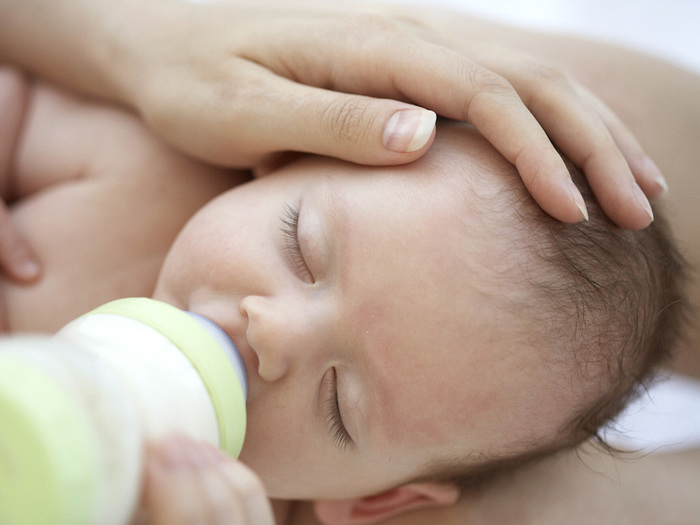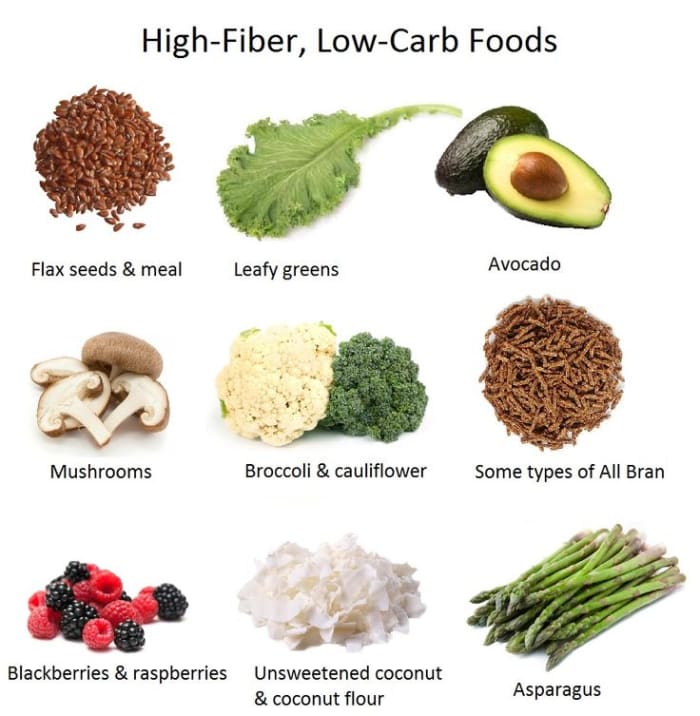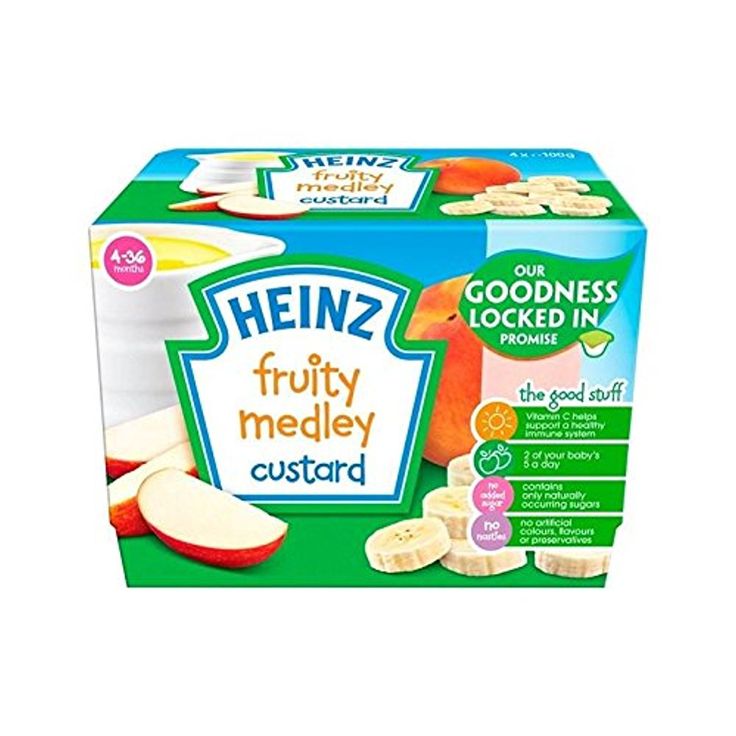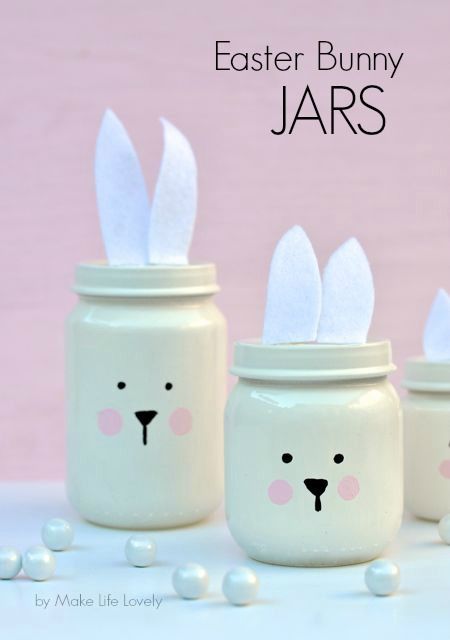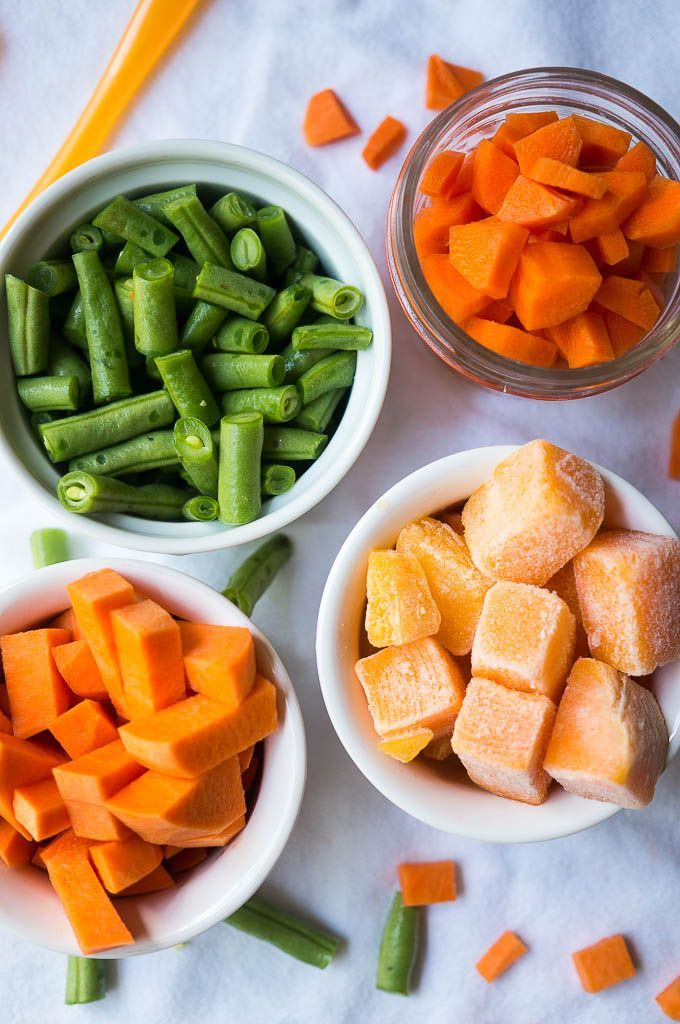How to feed baby deer bottle
Wildlife First Aid - How to Feed Baby Deer (Fawns)
Baby fawns go through two containers of milk a day. All goat milk or a fawn replacement milk should be used. Some Walmart stores carry goat milk; Tractor Supply stores carry a wildlife replacement milk that will include fawns on the back label.
A newborn fawn is the size of two Chihuahuas. It's important to add seven drops of lactate as well to the formula. If you have a young fawn, do not add anything solid.
When
they are the size of the deer in the photos below, add
some solid food to the formula such as baby rice or baby
cereal.
Mix it well with water until it has a pudding-like consistency.
Deer love sweet tastes, and bananas are always a good
source of sweetness. For older deer, you can add a banana,
but be sure to beat it with a fork until it liquefies.
You can put it into a blender or use a mixer and stir
it up -- but make sure the banana seeds don't clog the
nipple.
| The hole in this nipple is too large! |
Also, be sure that the hole in the nipple
is not too large so the liquid cannot be drunk too quickly. If they drink too fast, they will give themselves a stomachache
along with having digestive problems.
If they drink too fast, they will give themselves a stomachache
along with having digestive problems.
Before feeding, heat up the formula. You don't want to feed deer cold formula. Then give it to the deer before everybody else eats it. (Ingrid said that as one of her cats was sampling the formula to be sure it was just right.)
Use a funnel to pour the mixture into
baby bottles (two per fawn per feeding).
There
should
be
two feedings a day. Be sure to heat the liquid.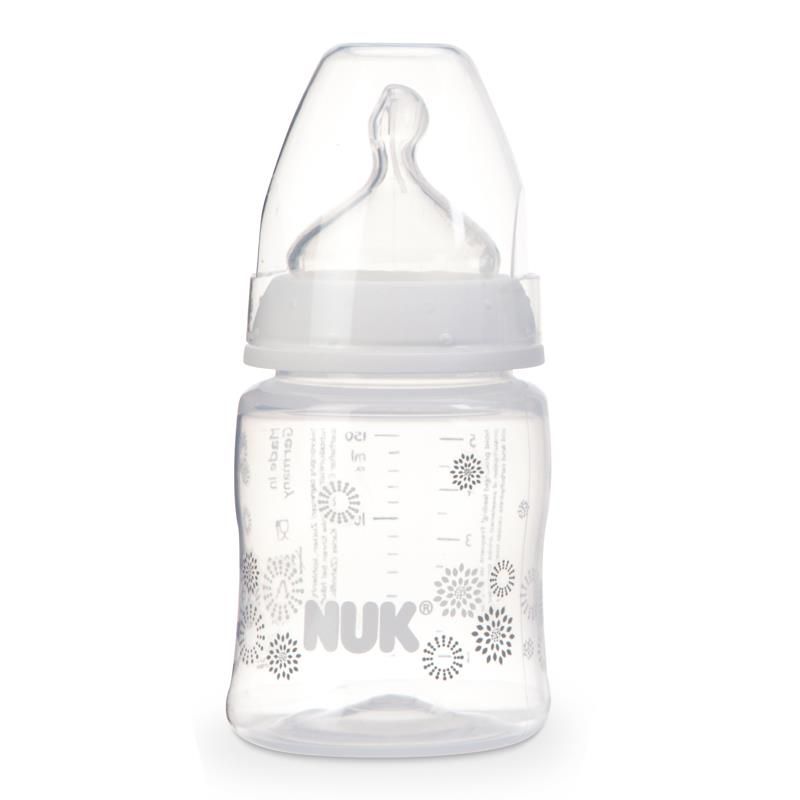 It must
be given very warm.
It must
be given very warm.
When feeding, keep the bottles high because that's how they would eat from the mother as she stands up
They go through it quickly.
You can pull and push back and forth as you feed, because that's what the mother does.
Also take a warm wet cloth and wipe the genital area to help stimulate the bowels. If they are not kept regular, they will get diarrhea or become constipated.
The deer in the photo are not that young,
more like two months old.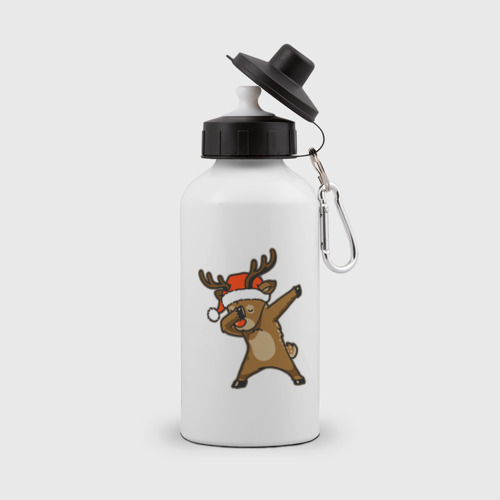 By the way, these guys
are not related.
By the way, these guys
are not related.
If they're older, you can chop up carrots or apples and just stick the pieces in their mouth. When deer go from formula to other foods, it's a big move.
FURTHER NOTES:
Unless you actually see a dead doe, leave the fawn alone. Fawns are rarely orphaned. The mother will often run if you approach, and return to the fawn after you leave; the fawn can't run, and will typically freeze and try not to be seen.
Be sure to contact an animal rehabilitator
promptly if you are dealing with a young fawn, because
they imprint quickly, and once imprinted, are problematic
to
release into
the wild.
Wildlife Watch / Rehabilitator Hotline: 877-WILD-HELP |
SEE ALSO:
The R.O.C.K. column is each issue of the
Wildlife Watch Binocular.
Back to First Aid Index
Fawn Care Guidelines - NADeFA
By Dr. Cliff Shipley
These are general guidelines for raising whitetail and mule deer fawns. There are diseases and conditions that may be specific to certain areas or where these guidelines don’t work! As always, if it ain’t broke, don’t fix it! Always consult your local veterinarian for area specific conditions and to see if certain antibiotics or other medicaments may work better in your area or at different dosages.
Colostrum is the most important thing in the fawn’s life. It contains antibodies to the diseases that the does have been exposed to or vaccinated for. It also contains vitamins, protein, energy and laxative to get their intestinal tract working. We also believe that it contains factors that help prime the immune system to work properly. If they do not get colostrum, they are more likely to get scours, pneumonia, necrotic stomatatis, become chronic poor doers, succumb to other diseases and die. Colostrum can be obtained from milking out does that have lost their fawns (trust me, it’s tedious but worth it) or from someone that has cows, goats, sheep. You just need to be aware of the disease status of the place you get the colostrum from as you may lose your TB status or infect your fawns with Johne’s or other diseases. A tip that may be useful is to go to the drug store and get a breast pump to help you obtain colostrum from a doe. Heat treating or pasteurizing this non-farm colostrum may be your best bet to make sure you don’t spread disease. The following are suggestions for things that you can do to help make your fawning season more successful and hopefully raise healthy fawns. If you have vaccinated your does pre-fawning for some of these diseases, you may not want to or have to give some of these things to the fawns.
The following are suggestions for things that you can do to help make your fawning season more successful and hopefully raise healthy fawns. If you have vaccinated your does pre-fawning for some of these diseases, you may not want to or have to give some of these things to the fawns.
Birth/Day 1:
- Allow fawn(s) and doe to bond/nurse
- If cold, multiple births, or doe fails to claim fawn(s) or they don’t nurse:
A. Tube with colostrum (cow/doe; goat/ewe) or give First Catch Fawn or allow fawn to nurse colostrum from bottle
B. Pull fawn and bottle raise (make sure it gets colostrum either via tubing or nursing from bottle)
C. Graft to another doe
8 to 18 Hours (8-12 works best for me)
- Tag (each state may have different requirements, try to get a herd tag and a “state” tag in so they can be identified properly. Microchipping and tattooing may also be options for some producers.
- Give First Catch Fawn or E.
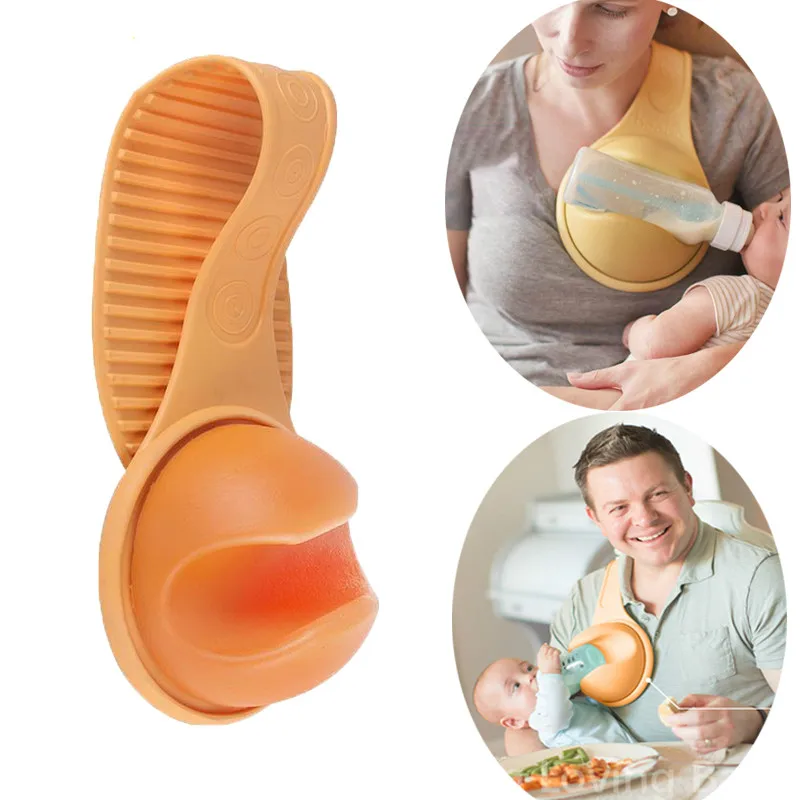 colizer + C (2-5 ml orally) or E. colizer (2 -5 cc orally) plus C&D antitoxin orally/SQ (use lamb label dose). I do this to ensure that the fawns get colostrum and protection against E. coli and Clostridium Type C&D. If the does have been vaccinated and you’re sure the fawns got plenty of colostrum, you can skip this, but for the most part it’s pretty cheap insurance on those expensive fawns.
colizer + C (2-5 ml orally) or E. colizer (2 -5 cc orally) plus C&D antitoxin orally/SQ (use lamb label dose). I do this to ensure that the fawns get colostrum and protection against E. coli and Clostridium Type C&D. If the does have been vaccinated and you’re sure the fawns got plenty of colostrum, you can skip this, but for the most part it’s pretty cheap insurance on those expensive fawns. - Antibiotics are optional, but in high risk fawns (cold, small, no colostrum) you may want to give prophylactic antibiotics or if certain diseases are common on your farm/ranch. I recommend SQ (under the skin) because I don’t want to hurt any muscles on that delicate fawn and most medications are absorbed as well SQ as they are intramuscularly (IM). The FDA has recently outlawed all extralabel use of Excede so depending on how you or your veterinarian interpret the rules, you may not wish to use. I haven’t decided yet myself!
a. Excede 0.15 ml SQ or
b. Draxxin 0.1 ml SQ or
c. Nuflor 0.6 ml SQ
Nuflor 0.6 ml SQ - Vitamin E/Se (if in deficient area: make sure you consult with your local veterinarian) 1cc BoSE SQ
- ProbiosR or similar product: lamb dose or 1/10th to _ calf or foal dose. There are many probiotic preparations on the market. Many also have some vitamins and minerals as well. There are some deer specific ones that you may want to use that may be easier to titrate the dose on.
- Vitamin AD 0.05-0.1 ml SQ optional. If does have had poor nutrition or under lots of stress probably need to do. If fawns are weak or slow probably need to give.
- pull hair sample for DNA. Put in a paper envelop and label appropriately
- may want to consider giving plasma/transfuse fawns if unsure of colostrum intake, weak, sick, extremely valuable. Also can test for failure of passive transfer by your veterinarian doing a total protein test. Transfuse all that fail.
24-72 Hours
Pull fawns that you are going to bottle rear. Everyone pulls fawns for bottle rearing at different times. Do what has worked best for you in the past. Once fawns are 24 hours old or so, their gut ‘closes’ so that they probably won’t absorb any more antibodies from the doe, so that is a good time to pull them. Some people like to wait longer, but the longer you wait, the more difficult it is to start the fawn on the bottle. I personally like to wait till they are 24 to 48 hours old and pull them late afternoon/early evening and then try to feed them once before I go to bed. If they eat, fabulous, if not, they are hungry in the morning and usually take right off on the bottle.
Everyone pulls fawns for bottle rearing at different times. Do what has worked best for you in the past. Once fawns are 24 hours old or so, their gut ‘closes’ so that they probably won’t absorb any more antibodies from the doe, so that is a good time to pull them. Some people like to wait longer, but the longer you wait, the more difficult it is to start the fawn on the bottle. I personally like to wait till they are 24 to 48 hours old and pull them late afternoon/early evening and then try to feed them once before I go to bed. If they eat, fabulous, if not, they are hungry in the morning and usually take right off on the bottle.
For those of you who don’t want to bottle raise, some people are trying to ‘imprint’ their fawns to make them semi-tame. This is a technique that horse people have been using for years. Simply catch, hold, play, rub, pet the fawn early and as often as you can to imprint on it that humans are not all that bad, while letting mom do the feeding. Early reports are that the fawns are not as tame as bottle babies, but tame enough that they are happy with the results.
Bottle Feeding
First week or so: 2 to 4 ounces five times a day. I feed at 6 a.m., 10 a.m., 2 p.m., 6 p.m. and 10pm to 11 pm. You can feed more often and smaller amounts, but you should try to feed 10% to 20% of the fawn’s body weight per day in milk. So if your fawn weighs 6 lbs (96 oz), then 10% is about 10 oz., 20% is 20 oz., etc. This allows the fawns to grow at the rate you want.
If using a formula designed for fawns or goat milk replacer, the fawns should not scour using these guidelines. Fawns do not scour generally from feeding (with the right formula), they scour from disease (E. coli, Salmonella, rota or corona virus, Clostridium, coccidiosis, etc). If properly cared for and clean equipment used, you should not have scour problems. If you do, then something is wrong and you need to adjust accordingly.
I often encourage using milk replacer. Use one that is formulated for fawns and mix according to the directions. If you have problems, you should analyze your water as it may have bacteria or mineral content that is causing the problem.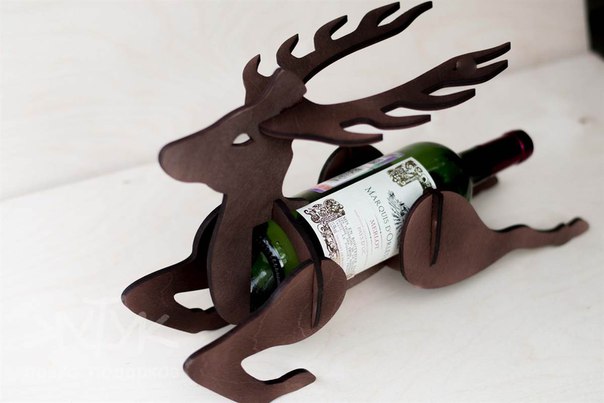 If you do feed goat milk, make sure your source doesn’t have Johne’s Disease, Caseous Lymphadenitis or other diseases and has your same TB status. I know people that have successfully raised fawns on lamb milk replacer, whole cow’s milk and other formulas. If it ain’t broke, don’t fix it, but if you look at all the data, fawns should and usually do better on species specific milk due to the fat and protein and sugar content being most similar to the doe.
If you do feed goat milk, make sure your source doesn’t have Johne’s Disease, Caseous Lymphadenitis or other diseases and has your same TB status. I know people that have successfully raised fawns on lamb milk replacer, whole cow’s milk and other formulas. If it ain’t broke, don’t fix it, but if you look at all the data, fawns should and usually do better on species specific milk due to the fat and protein and sugar content being most similar to the doe.
Fawns will need to be stimulated to defecate and urinate for the first few weeks. I generally recommend you use rubber gloves and baby wipes and stimulate while feeding. This is what the doe does and usually you can perfect the technique so you can catch and do not have much ‘wiping’. You may want to change gloves between fawns so that you don’t spread any potential diseases from fawn to fawn.
I usually recommend decreasing the number of feedings every 10 days or so by one. So at 10 days, drop to four feedings per day (6 am, 12 pm, 6 pm and 10-11 pm) and all they can eat. I know this is heresy and most people calculate things out to the ounce, but about 20 percent of body weight is all they can consume, and I have not had any problems. Once again, if you are doing something that works, don’t change. I’m lazy and want my fawns to grow as fast as they can.
I know this is heresy and most people calculate things out to the ounce, but about 20 percent of body weight is all they can consume, and I have not had any problems. Once again, if you are doing something that works, don’t change. I’m lazy and want my fawns to grow as fast as they can.
Generally with this schedule, feed three times per day around 20 days (6-7 am, 2-3 pm and 10-11 pm), twice a day at 30 days of age (6-7 am and 6-7 pm), and once a day at 40-50 days. You can wean them as soon as you think they are consuming enough dry feed and greens or you get tired of feeding them. I have several producers that feed three times a day from the start and don’t have any problems. I’m probably going to try that this year due to my ‘free’ help starting to disappear. I may even be so bold as to go to twice a day after the first 3-5 days due to the fact that while doing some research, I found a couple of articles on normal (non-captive) deer feeding behavior and it indicated nursing activity of 2-3 times per day. I will let you know how that turns out
I will let you know how that turns out
Offer fresh, clean water everyday in a small bowl. Also offer small amounts of “creep” feed or your regular deer ration. Keep it fresh and clean by cleaning the bowls daily and offering new feed. I generally recommend a 18% ration for fawns, but if you are successfully feeding 20%, that’s fine. I also hand feed select ‘greens’ — hand-picked alfalfa, clover, dandelions, etc. — to the fawns every day for them to nibble on. You can also use very good quality alfalfa or other legume hay, but I think that they eat the fresh stuff better. Some people offer ‘clean’ dirt in a bowl from birth on. The theory is they get some nutrients from the dirt to help them and their intestinal tract function better. I know many people who do and don’t do this and they all get along fine.
I keep fawns in separate pens and isolated from other fawns for several reasons. They will ‘bond’ better to humans (may want to get them used to multiple people) if kept separate and it greatly decreases the chance of spreading disease between the fawns. Think like a dairy farmer raising calves in calf hutches. I generally mix the fawns in small groups depending on numbers and fawn growth and conditions at 3 to 6 weeks (or more). If they start to nurse/suck on each other (ears/tail/navel) then I either take them apart or spray vinegar or Chew Guard or Bitter Apple or Bitter Orange on the fawn part they are sucking on. The latter two products can be obtained from your veterinarian or catalog source.
Think like a dairy farmer raising calves in calf hutches. I generally mix the fawns in small groups depending on numbers and fawn growth and conditions at 3 to 6 weeks (or more). If they start to nurse/suck on each other (ears/tail/navel) then I either take them apart or spray vinegar or Chew Guard or Bitter Apple or Bitter Orange on the fawn part they are sucking on. The latter two products can be obtained from your veterinarian or catalog source.
Fawns could be weaned as early as 60 days or so following these guidelines, but it is usually best to base weaning on feed consumption and body condition. Bottle feeding is time consuming and milk replacer costs lots of money. You will have to use your best judgment and do what fits your situation best. Many people like to feed longer to keep the babies tame and used to humans. Some just like to feed the babies (so do I, but it does get old after a while!).
Pens should be on dirt (if possible) or the new raised decks may work well (I haven’t tried them). The dirt should be covered with two to four inches or so of crushed limestone and then have shavings (or straw) on top. I think shavings work better and I am fond of cedar chips as I think they tend to keep flies away a little better plus I like their smell. Pine shavings or chips are fine but try to get kiln dried (cleaner with fewer bacteria in them) and try to stay away from sawdust on the really small fawns (gets in their eyes). I usually sprinkle some barn lime in every once in a while or when changing the shavings/straw as this changes the pH and tends to keep the bacteria down and the area ‘sweet. Especially as the fawns grow and start urinating enough to keep it wet. Make sure that you have good ventilation so the there is air circulating, but no drafts. This will also help keep the area dry.
The dirt should be covered with two to four inches or so of crushed limestone and then have shavings (or straw) on top. I think shavings work better and I am fond of cedar chips as I think they tend to keep flies away a little better plus I like their smell. Pine shavings or chips are fine but try to get kiln dried (cleaner with fewer bacteria in them) and try to stay away from sawdust on the really small fawns (gets in their eyes). I usually sprinkle some barn lime in every once in a while or when changing the shavings/straw as this changes the pH and tends to keep the bacteria down and the area ‘sweet. Especially as the fawns grow and start urinating enough to keep it wet. Make sure that you have good ventilation so the there is air circulating, but no drafts. This will also help keep the area dry.
Helpful Products
Some products that are commonly used that you may want to obtain prior to fawning are:
- First Catch Fawn and First Fawn milk supplement from Labelle Inc.
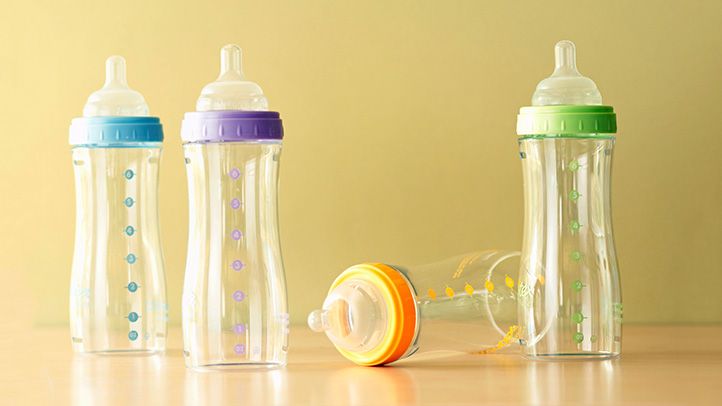
- Milk Replacer: Fawn specific such as Superior, Zoologic, Fox Valley, etc.
- Goat milk replacer: Several companies provide this, but if it is inexpensive, it’s probably not any good. Some cheap milk replacers are made from non-milk products and are less digestible. You generally get what you pay, so don’t buy the cheap stuff. Purina, Land-O-Lakes, ADM etc. are usually good sources. There may be others, but read the label. If in doubt, check with your veterinarian or nutritionist. If you are using a product that has a lamb/kid label, mix at the kid rates usually.
- Pritchard nipples: Fawns generally take off on these better than others. They are available from a variety of sources. If in doubt, check Nasco.
- Ear tags: Some states require a special ID. I also like to use the sheep/goat tags so they are double ID’ed.
- Needles, syringes, medications.
- Disinfectant for bottles, navel cord
- Fawn cradle
- Fawn masks
- Put everything that you need in a “tote” or tool box for easy use
- Record book: the shortest pencil is better than the longest memory!
I hope some of these suggestions help you have a successful and fun fawning season. By the way, I’m not endorsing any of these products, just using names that I am familiar with and have worked for me. If you are using other products or there are other products out there that work for you, by all means, use them. I’m not getting a kickback from anyone!
By the way, I’m not endorsing any of these products, just using names that I am familiar with and have worked for me. If you are using other products or there are other products out there that work for you, by all means, use them. I’m not getting a kickback from anyone!
Nursing of young ungulates
Nursing of red deer (red deer) in artificial conditions
I must say right away that my personal experience in this area is not very great - we (so far) raised only one baby red deer to its feet. But at the very beginning we faced a huge problem - we could not find information anywhere that would help us out. Actually, that's why I came up with the idea to write a short guide for those who still have to enter in the search engines "how to feed a red deer cub."
First you need to determine the age of the animal. Our Yashik came to us through second hands, so only a veterinarian could reliably determine his age - 6-7 days. So, how does a red deer cub look like at a week of age:
So, how does a red deer cub look like at a week of age:
Height at the withers: 64 cm
It still does not stand very well on its legs, they are slightly curved with the letter X. Often “cries”.
Teeth: back (if I may say so) not yet, front 8 (now Yasha is already 2 months old, but the front is gone), they are all below. 2 in the center are very large and funny :o) the rest are quite small.
Weight: 10-12 kg (but this is taking into account that he was fed incorrectly all his first week)
By the way, it will be useful to understand who is in front of you - red deer or spotted deer. They are often confused. The red deer is larger (against our 65 at the withers - 45-50 in the sika deer, weight approx. 4-6 kg). The head is large, the ears are elongated. I would compare them with the length of the nose from the tip to the eyes. The deer has a neat muzzle with VERY large round ears. Now as for the coloring. It should be noted that everyone has spots. In deer, they are located along the ridge and will come off after the first molt in October, while in spotted deer they are all over the body and will remain for life.
In deer, they are located along the ridge and will come off after the first molt in October, while in spotted deer they are all over the body and will remain for life.
In red deer the spot under the tail is yellow and small, dimly outlined. In a deer, on the contrary, it is white, wider and strikingly different in color from the general background.
And now the most important thing - about feeding. Or is it more correct to say feeding .
Golden rule: don't overfeed. Feeding and deer and deer is a fractional milk supply. We gave cow's milk (necessarily boiled!) With the addition of water and infant formula "Malyutka 1" (one - that is, from birth).
Mixture: 1 liter of milk, 8 measuring spoons of formula, 0.5 liters of water. For the first 2 weeks, you need to feed 8-10 times a day, 100 g of the resulting mixture. It is better to use a bottle with a simple (not the most expensive) elongated nipple. By the way, because of the structure of the jaws, the deer did not recognize the Aventa's nipple so respected by the mothers. Of course, it is better to warm up to 36-38 degrees. You can check the temperature in the same way as for children - a drop on the bend of the elbow.
Of course, it is better to warm up to 36-38 degrees. You can check the temperature in the same way as for children - a drop on the bend of the elbow.
After the second week, give about 150 ml of water during the day between feedings. Once a day, we gave lightly salted (1 teaspoon without top per liter of boiled water). Now we feed 8 times a day, 250 ml each.
At the age of three weeks, a red deer was drunk with a five-day course of the Vetom-2 probiotic (I won’t say why exactly “2”, but that’s how we were determined in the veterinary clinic). Dilute one sachet in 200 ml of water, divide in half and give twice a day one hour after feeding (so you will need 5 sachets)
Month. At this age, you can transfer from a baby bottle to a cow bottle (for feeding calves - sold in veterinary stores). No, of course, you can continue to drink from a small one, but it will be tiring - you need to fill it several times for one meal or have 4 at once. At the same time, we began to feed Yashechka with Kormilak whole milk substitute. Its cost in Primorsky Krai ranges from 1900 to 2400 for a 25 kg bag. This amount is enough for about 2 months. The first days we add kormilak to cow's milk, but we cancel the infant formula (i.e. it turns out 1 liter of milk + 0.75 ml of water + 100 g of kormilak), then (well, say, on the fifth day) we give pure kormilak, i.e. . at the rate of 1:9, as written on the package. I weighed a plastic container on a culinary scale, it turned out to be 200 gr, i.e. almost 2 liters of water. At the age of one to two months, his daily intake increased from 2.5 to 4 liters of formula per day, and the frequency of feeding decreased from 6 to 4 times.
Grass . I wondered for a long time when to start feeding with grass. But everything turned out to be easier - Yashichek himself reached for the raspberries. And off we go. Most of all he liked dandelions, grapes, raspberries. Then come beets, ash leaves, currants. And he also loves berries terribly: o) Honeysuckle, strawberries, currants, raspberries, irga - everything goes with a bang. At the same time, the apples directly spits out. You can give pureed vegetables as a substitute for grass.
Faeces. Normally, he is like a goat - balls. Our pet had diarrhea at first. Wrong food - diarrhea, did not boil the bottle - diarrhea, overfed - diarrhea again. What to do. Give less food and carefully monitor the sterility of dishes.
Dehydration On the second day of life at my house, the veterinarian diagnosed us - Yashka refused to eat, could hardly stand on his feet. He was given a dropper in the neck (do not do it without a specialist!) with saline through a butterfly 4-ku, 200 ml + half a bottle of glucose. He almost immediately got to his feet, but it was impossible to feed, it was possible to give saline in the evening and replace one meal with it the next day. In general, having a doctor in the family, on the second day we were ready to repeat the drip on our own, but, fortunately, it was not necessary. In order to prevent, see above, drink salted water daily.
Arrangement places. Here, of course, the more the better. Yasha had to live in an open chicken pen, 3x8. The size, frankly, is not great. Net height 3.5 meters. It is necessary to make a small canopy, 1.1-1.2 m high, with a roof and without one wall - so that it can enter freely, cover the floor with hay, which needs to be changed regularly (because they defecate, most often, under themselves).
General recommendations. The life of these small, defenseless creatures is in your hands. Therefore, it is important to decide what will happen to them when they are ready to exist on their own: do you intend to give it to the zoo / zoo / safari park or plan to release it into wildlife. The permissible frequency of contact with the animal depends on this. If he is destined for the fate of a wild beast, then do not allow strangers to approach him, i.e. he should know only those 1-2 people who care about him. But you need to remember that even with this option, it is vital for him, no matter how pathetic it may sound, closeness and warmth, a sense of security - when you feed him, do not be lazy to stroke and talk - he will soon begin to recognize your voice.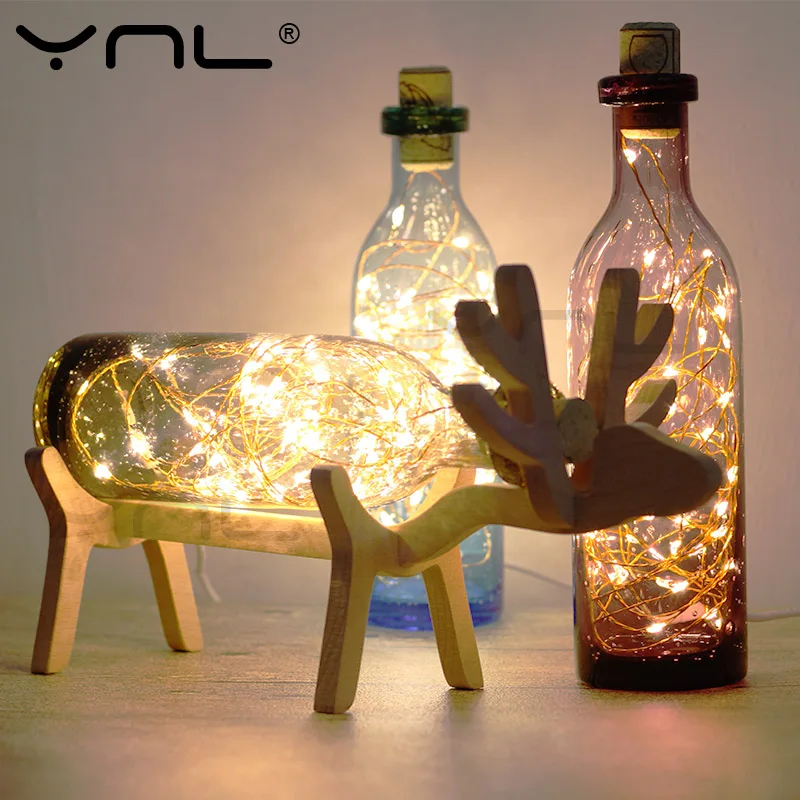 If you are not going to let go into the wild, then you need to hug the first 3-4 weeks as often as possible - you yourself will see how it calms him down.
If you are not going to let go into the wild, then you need to hug the first 3-4 weeks as often as possible - you yourself will see how it calms him down.
Russian reindeer feeding experience. "I breastfeed my deer because he is like my own baby" How can you feed deer at the zoo
Beautiful, graceful, graceful and intelligent animals - reindeer - live in the northern polar latitudes. Reindeer food is not available everywhere, so they have to spend a lot of time and effort looking for it. Deer are able to walk hundreds of kilometers in summer - to the north, and in winter - to the south, in order to feed themselves and their offspring.
We will try to find out together with you what main and pasture food saves animals from starvation in the harsh conditions of cold latitudes in summer and winter.
Deer feeding habits
Unfamiliar with the natural conditions of the tundra, it may seem that the natural world of this region is very poor. This is not so, therefore, large animals, the basis of the diet of which is plant food, manage to provide themselves with everything they need on their own.
This is not so, therefore, large animals, the basis of the diet of which is plant food, manage to provide themselves with everything they need on their own.
Their main food in summer is leaves of willow, dwarf birch, and other plants, as well as grass and berries. It has been noticed that deer are picky about greens - they will not eat wilted branches with dry leaves, but will choose young and juicy leaves. They even eat mice. Deer do not specifically hunt for them, but if a mouse gapes, it will most likely be eaten along with a bunch of juicy grass. Deer graze in groups of three to five individuals where there is lush grass - most often on the sea coast.
In autumn, deer find cotton grass, cloudberries, fallen acorns, and sorrel. Mushrooms are considered a favorite delicacy of reindeer. Most they find right away, but in order to feast on flywheels, in early winter they have to dig up the snow.
In winter, when there is neither grass nor mushrooms, animals feed on reindeer moss, digging snow up to a meter thick with their hooves, they find lichens and eat them up to ten kilograms a day.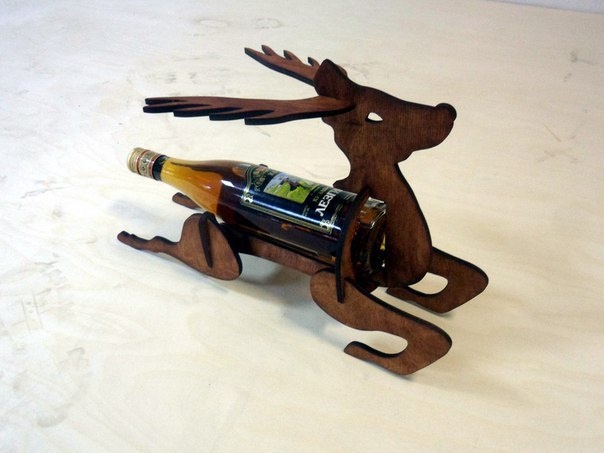 In addition to reindeer reindeer, they eat lichens from branches and tree trunks with pleasure, drinking sea water and eating algae. So that such a monotonous diet does not lead to vitamin deficiency in winter, because the winter period here lasts almost nine months, deer are given bone meal, table salt and other feeds that satisfy their needs for vitamins, minerals and microelements.
In addition to reindeer reindeer, they eat lichens from branches and tree trunks with pleasure, drinking sea water and eating algae. So that such a monotonous diet does not lead to vitamin deficiency in winter, because the winter period here lasts almost nine months, deer are given bone meal, table salt and other feeds that satisfy their needs for vitamins, minerals and microelements.
For free-ranging animals, finding salt sometimes becomes a real problem, therefore, in order to find shale emissions, deer go on many kilometers of wandering.
Yagel is an amazing plant that grows in most of the natural tundra zone. This is a soft moss of light color, it sometimes grows in height up to 40 centimeters. It grows slowly, so pastures are quickly eaten up and herds of deer roam again and again in search of food. It is thanks to its chemical composition that deer do not get sick, and endure the harsh winter cold.
Animals can gnaw their discarded horns, which is not considered something out of the ordinary. Moss moss does not satisfy the body's needs for protein and salt, so animals eat lemmings, bird eggs and even their chicks.
Moss moss does not satisfy the body's needs for protein and salt, so animals eat lemmings, bird eggs and even their chicks.
Feeding reindeer kept in paddocks
Representatives of northern peoples keep deer as pets, so they worry about what animals will eat in winter. They prepare reindeer reindeer moss in the summer and store it in dry sheds. Before giving it to an animal, the reindeer moss is soaked in water, then it becomes juicy, as if it had just been plucked. Sometimes salted fish heads are added to reindeer moss, deer love such a platter.
Since meadow grass is getting smaller every year, animals are given wheat, straw, bran, black bread and other products that replace meadow delicacy.
Reindeer have adapted to the natural conditions of cold latitudes and feeding on lichens, therefore they live in places where others, except for the musk ox, cannot live. Every year, beautiful and noble animals are becoming less and less, due to the deterioration of the environmental situation, their living conditions are changing, which negatively affects their health and immunity. The number of individuals is also affected by poaching and uncontrolled hunting.
The number of individuals is also affected by poaching and uncontrolled hunting.
Northern peoples owe much of their existence to reindeer, so they have learned to live with them in peace and harmony.
The most important thing in reindeer farming is feeding. I have already written repeatedly that the red deer is less demanding on the variety of food than the cow, but very demanding on quality and quantity.
The biggest mistake I have seen with other farmers is dividing into small pens. In a small space, animals, they say, are better controlled and driven from paddock to paddock, but here we are faced with another problem - a trampled field. On the project in Smolenskaya, my boss was of a mathematical mind, and how could he (or maybe not bad) hammered in me his view of things. I decided to digitize the reindeer, digitize their livelihoods, this is useful for me and was familiar to the management.
Here's what I got: In a large paddock, the grass left much more slowly than in a small one. Pure proportion - X sq. m area per 1 deer for 1 day, it was not possible to display. For 7.5 ha it was 17.4, and for 2 ha it was 25. All because the deer trampled down part of the field. After all, there is a concept - the living and total area of \u200b\u200bthe apartment, for a small paddock, the percentage of area under the beds and trails was noticeably higher. And hence the lack of feed and poor condition for the breeding period. If you do not feed, then our animals will approach the autumn mating thin and emaciated, and this is a minus for reproduction, and if you feed, then we get into another problem. Deer are wild animals and will eat as long as there is food, especially such a good one as compound feed. I calculated the dose incorrectly, and females will come to mating with obesity, and this is also minutes for reproduction. Therefore, every reindeer breeder should strive to keep his livestock on natural feeding as long as possible, this is physiologically correct and economically feasible.
Pure proportion - X sq. m area per 1 deer for 1 day, it was not possible to display. For 7.5 ha it was 17.4, and for 2 ha it was 25. All because the deer trampled down part of the field. After all, there is a concept - the living and total area of \u200b\u200bthe apartment, for a small paddock, the percentage of area under the beds and trails was noticeably higher. And hence the lack of feed and poor condition for the breeding period. If you do not feed, then our animals will approach the autumn mating thin and emaciated, and this is a minus for reproduction, and if you feed, then we get into another problem. Deer are wild animals and will eat as long as there is food, especially such a good one as compound feed. I calculated the dose incorrectly, and females will come to mating with obesity, and this is also minutes for reproduction. Therefore, every reindeer breeder should strive to keep his livestock on natural feeding as long as possible, this is physiologically correct and economically feasible.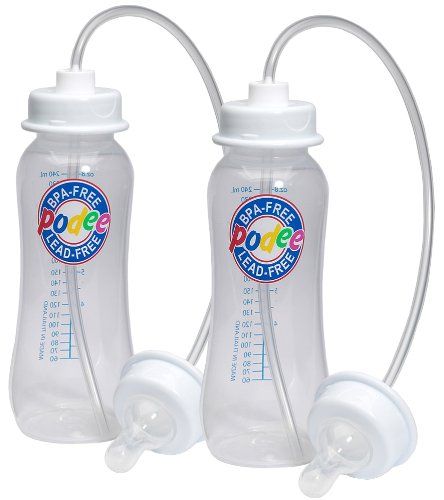 The area of feeding pens must be calculated taking into account the amount and value of the grass cover, the amount of precipitation, soil structure, geography, and many other factors. After talking with other reindeer herders, I came to the conclusion that for a normal meadow in the Middle Strip, paddocks should be 6-8 hectares. You don't need more, you don't need less. Have 4 pieces of small paddocks of 1.5-2 hectares for various zootechnical purposes.
The area of feeding pens must be calculated taking into account the amount and value of the grass cover, the amount of precipitation, soil structure, geography, and many other factors. After talking with other reindeer herders, I came to the conclusion that for a normal meadow in the Middle Strip, paddocks should be 6-8 hectares. You don't need more, you don't need less. Have 4 pieces of small paddocks of 1.5-2 hectares for various zootechnical purposes.
That is why every respectful reindeer breeder must determine externally, I would even say - from afar, the condition of his animals and correct it in time so that by September it comes up in perfect condition, otherwise we will lose in calves.
I give you a sign from the site, maybe someone will come in handy. Notice how thin the line is between Good and Very Good Condition.
So, autumn has come, we have coped and the second stage of feeding has begun.
We need to deceive the deer, they, like any females, including the human race, will never become pregnant if they do not have a guarantee of a good apartment and the opportunity to feed a baby deer.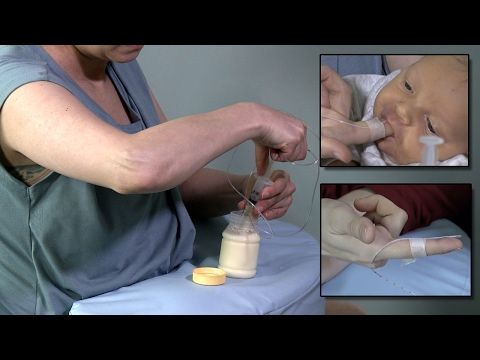 We need to deceive the females, to do this, make them think that everything will be fine. Avoid crowding and abundant feeding. In autumn, the grass is not the same, so we add silage / haylage and grain to the diet. Here you don’t have to worry too much about overfeeding - you won’t get particularly fat in the fall, especially with such physical exertion that the male experiences (I will not show porn videos a second time) , but still don't overdo it. After all, a deer is a herbivore and an excessive amount of concentrated feed causes acidosis and death of the animal. The normal dose is considered to be 1-1.5 kg per adult deer and 0.5-0.75 kg per calf, depending on the quality of the feed and the ambient temperature.
We need to deceive the females, to do this, make them think that everything will be fine. Avoid crowding and abundant feeding. In autumn, the grass is not the same, so we add silage / haylage and grain to the diet. Here you don’t have to worry too much about overfeeding - you won’t get particularly fat in the fall, especially with such physical exertion that the male experiences (I will not show porn videos a second time) , but still don't overdo it. After all, a deer is a herbivore and an excessive amount of concentrated feed causes acidosis and death of the animal. The normal dose is considered to be 1-1.5 kg per adult deer and 0.5-0.75 kg per calf, depending on the quality of the feed and the ambient temperature.
We put a family of deer (20-25 females per male) on an area of 2 hectares, so small paddocks came in handy. For industrial breeding, where the accuracy of whose calf and from whom is no longer important, then we put one hundred females and 4-5 males on 8 hectares, naturally without horns.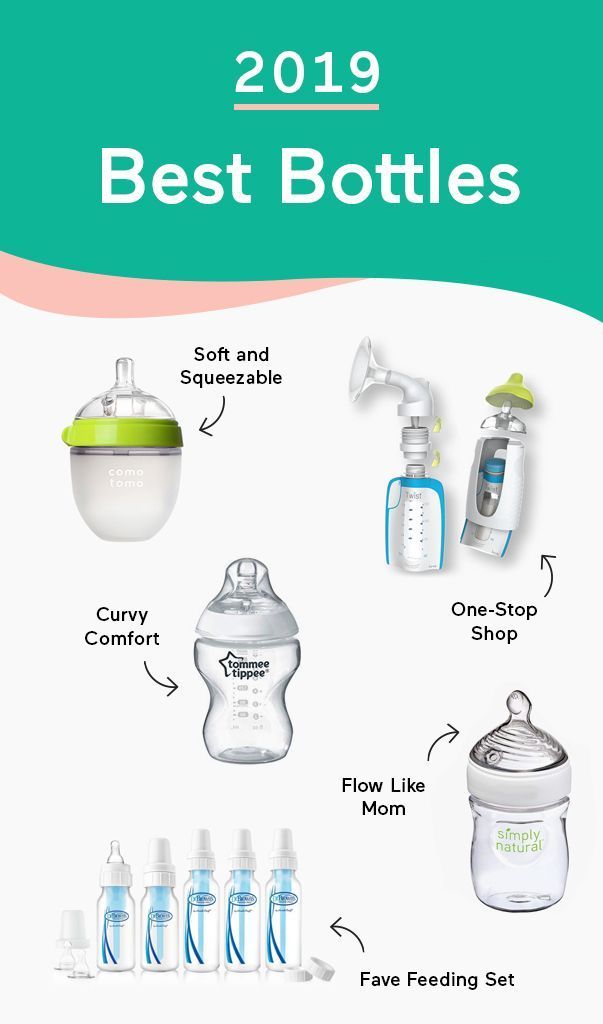
Food
The distinguishing feature of the reindeer is the ability digest the carbohydrate part of lichens by 80-90%, while other ungulates absorb no more than 40 - 50%. Yagels are high-calorie, rich in carbohydrates, but contain little protein, vitamins and minerals, and nutritionally worth at the level of concentrated feed used for livestock. Compensation missing substances is carried out by eating other plants and snow greens, animal feed, mushrooms, gnawed horns and bones, eating marine emissions.
The diet of the reindeer changes dramatically with the seasons. Spring especially greedily deer eat grasses and sedges, leaves are often used later various species willows and dwarf birches. Summer deer eat about 300 plant species. The vast majority of these are green plants: by weight they occupy 70-80% of all food in the stomach; lichens same - only 10 - 15%, the rest is lei and other forbs. autumn in the value of lichens noticeably increases in the diet.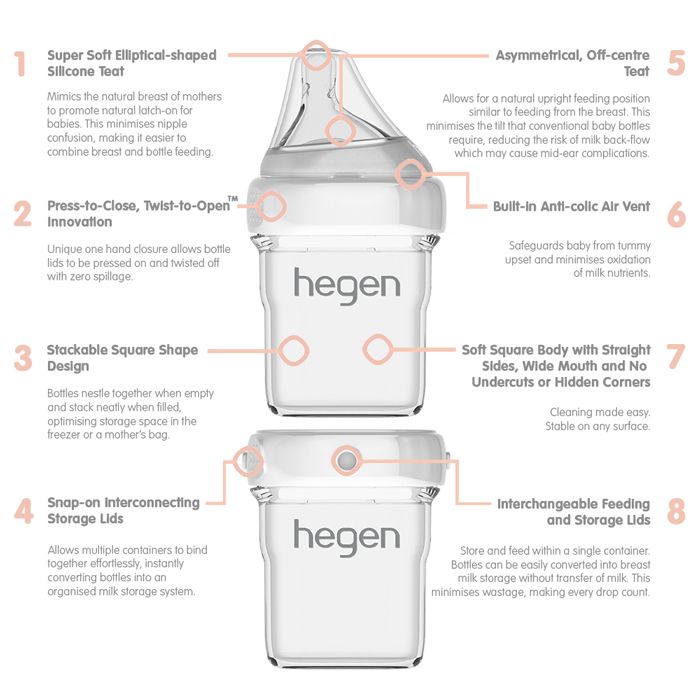 In stomach contents green plants occupy 30-50% of all food. Among other foods, they willingly eat mushrooms, even dig them out from under the snow. For mushrooms mountain deer descend even from the loaches into the forest belt. Lichens in winter are in a row areas as the main food and in the stomach, by weight, it takes up to 70% of all food, the rest is occupied by the remains of green plants preserved under the snow, mosses and other impurities. Animals detect reindeer moss under the snow by smell. In the tundra, they dig up snow up to 75-80 cm thick with their front legs and muzzle, and loose snow in forests - up to 1.5 m.
In stomach contents green plants occupy 30-50% of all food. Among other foods, they willingly eat mushrooms, even dig them out from under the snow. For mushrooms mountain deer descend even from the loaches into the forest belt. Lichens in winter are in a row areas as the main food and in the stomach, by weight, it takes up to 70% of all food, the rest is occupied by the remains of green plants preserved under the snow, mosses and other impurities. Animals detect reindeer moss under the snow by smell. In the tundra, they dig up snow up to 75-80 cm thick with their front legs and muzzle, and loose snow in forests - up to 1.5 m.
With such a diet, deer experience protein-mineral starvation, in connection with which they greedily eat snow moistened with urine people and dogs, and if possible, try to eat animal feed origin (e.g. small rodents), destroy bird nests with eggs, drink sea water and eat washed ashore kelp. In summer, reindeer do not pay attention to urine, by lemmings eat willingly. In the diet wild deer in Taimyr, lichens are of subordinate importance, and the basis of fodder funds are wintering higher plants.
In summer, reindeer do not pay attention to urine, by lemmings eat willingly. In the diet wild deer in Taimyr, lichens are of subordinate importance, and the basis of fodder funds are wintering higher plants.
The number of reindeer is limited not by summer, but by winter pastures. Without prejudice to the restoration of reindeer moss in winter, it can feed itself at 4-5 times less deer than in the same area in summer. In summer, one deer needs 4-6 hectares, on average 3.2 hectares per head, and in winter 12-18 hectares, per year 18-24 hectares of pastures.
During the day in summer, a deer eats 11-22 kg of green mass (2.8-5 kg of dry matter), in winter - 8-14 kg of raw food. That is, winter consumption food and energy is about a third less than in summer, which occurs mainly during by reducing activity, slowing metabolic rate and using fat as a reserve source of energy.
For deer, the lack of water in food is no less noticeable than lack of food. If you feed deer with sodium salt in winter, they lose weight quickly: in an effort to quench their thirst, they eat snow in large quantities, devoid of salts, as a result, they spend a lot of energy on its melting. Need in winter in lichens is determined not only by their nutritional value, but also high content of water in them (up to 70-80%). Deer can do without lichens where there are many wet snowy plants: horsetails and winter green grasses, containing a lot of water, vitamins, proteins and trace elements. summer share lichens is minimal, as they dry out and are almost devoid of moisture.
If you feed deer with sodium salt in winter, they lose weight quickly: in an effort to quench their thirst, they eat snow in large quantities, devoid of salts, as a result, they spend a lot of energy on its melting. Need in winter in lichens is determined not only by their nutritional value, but also high content of water in them (up to 70-80%). Deer can do without lichens where there are many wet snowy plants: horsetails and winter green grasses, containing a lot of water, vitamins, proteins and trace elements. summer share lichens is minimal, as they dry out and are almost devoid of moisture.
Reproduction
Reindeer reach puberty in autumn in the second year of life and continue to breed until about 20 years of age, but already from 10-12 years age, many females begin to degrade the ovaries. Total duration life is about 25 years.
Reindeer herd. Photo: Sondrekv
The rut starts from mid-September-early October until the end October-mid-November.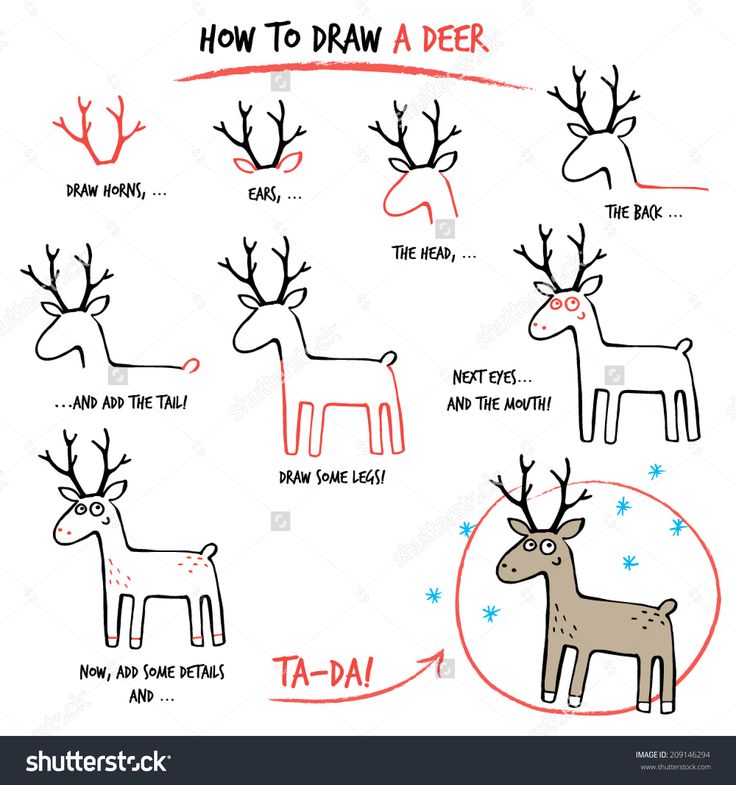 In the arctic tundra earlier than in the south of Siberia. Most a noticeable sign of the approach of the rut is the formation of mixed herds. By this time deer are ending their molt. The horns are ossified and cleaned of velvet. Fatness animals is close to the maximum. In places of concentration of animals appear peeled bushes and "points" with urine on the ground. Males acquire strong specific odor secreted by the secretion of the anal gland. Sound animal signals resemble a series of short snores.
In the arctic tundra earlier than in the south of Siberia. Most a noticeable sign of the approach of the rut is the formation of mixed herds. By this time deer are ending their molt. The horns are ossified and cleaned of velvet. Fatness animals is close to the maximum. In places of concentration of animals appear peeled bushes and "points" with urine on the ground. Males acquire strong specific odor secreted by the secretion of the anal gland. Sound animal signals resemble a series of short snores.
Reindeer are polygamous, i.e. male per breeding season covers several coats (3-13), forming "harems". In groups animals up to 10 individuals there is one bull, in larger ones - several. males fight each other in front of the female. In the absence of a female, there are no fights between males. happens. Skirmishes between bulls are ritual in nature. The males keep the females they eat little and lose up to 20% of body weight, by the end of the rut they become weak and are no longer able to resist male subdominants. After the rut, the males separate from the herd and kept separately. Calves do not leave their mothers during the rut.
The female is in heat for about 3 days and repeats 2-4 times after 11-22 days. The duration of pregnancy is 219-238 (from 192 to 246) days. Calving happens in May-June, a frequent period of migration, when in many places there is still snow. One calf is born, twins are rare. Mother intense licking cub, which contributes to the drying of the body and reduces the possibility of its frostbite or freezing.
For the first few hours after birth, the mother, next to whom there is a deer, continuously makes quiet hoarse sounds - "croaks", so that the cub remembers her voice and later finds the mother by it, that is communication in the family is supported by sound signals.
The fecundity of young females is lower than that of adults. barrenness small: under good feeding conditions it does not exceed 2-3% and only on poor pastures reaches 30-40%. In general, the fertility level of female reindeer lower than that of elk and roe deer, and more consistent with that of noble and spotted deer.
time after calving, while males lose their horns at the beginning of winter. Newborn the calf weighs 5-6 kg. He can on the same day get on his feet and mix for mother. The mother finds the stray calf by its voice and identifies it by smell. AT the first week of life, the calf is able to swim across the river. At the age of one month molting of the juvenile cover begins and ends in 3-4 weeks. Lactation lasts about 6 months (until winter).
In calves, the horns are in the form of knitting needles bent forward. hardening and cleansing of the horns in September-October, shedding in April-May. On the 2nd year of life horns with corolla and anterior process. The formation of the dental system ends by the age of three. By this age, males reach full growth, and by 5-6 years - full development.
Recommended perennial crops sown outside the enclosure are mowed annually just before flowering and then once or twice more. After the first mowing, it is desirable to feed non-pure legume and alfalfa herbage with nitrogen fertilizers (60-80 kg/ha), which will increase their yield and the amount of crude protein. The last cutting can be carried out after the first frosts, keeping the forage moist in small piles under sheds in feeding grounds or in sunny glades, where it thaws in the thaw or early spring.
The last cutting can be carried out after the first frosts, keeping the forage moist in small piles under sheds in feeding grounds or in sunny glades, where it thaws in the thaw or early spring.
The sooner the hay is dried, the higher its quality. The most common method of field drying of herbs in loose form is the most irrational and leads to the greatest loss of nutrients. The stalks of legumes need to be flattened, which speeds up the drying of the mowed mass by 1.5-2 times, and the loss of nutrients is reduced by 15-20%. With repeated drying after rain, a sharp decrease in the quality of hay occurs: the amount and digestibility of protein, sugar and starch are reduced by 4-5, fat - by 2 times. Noteworthy is the technology of harvesting loose hay with a moisture content of 25-30% with treatment with anhydrous ammonia (10-15 kg / t), which prevents stacks from self-heating, increases the protein content and helps to preserve the crop from rodents.
A more advanced technology - pressing hay with a moisture content of 20-25% from swaths into bales, rolls or rolls wrapped with polyethylene film, which allows you to save nutrition, significantly improves the digestibility of crude protein and reduces the cost of feed by about 20-30%. This technology is widely used in agriculture in Western European countries and in our advanced farms.
This technology is widely used in agriculture in Western European countries and in our advanced farms.
It is better to store loose, baled or rolled hay in sheds and under sheds, in the worst case - in haystacks with a backing of slug. It should be noted that with open access to feed, wild boars can destroy tons of oat or oat-vetch-pea straw, alfalfa, goat's rue or rapeseed hay in a few days and leave deer without food. Therefore, when deer and wild boar are kept together, high-quality hay should be stored only in closed sheds or outside the enclosure.
Hay should not be stocked in typical roofed nursery troughs commonly recommended for deer in all hunting publications. They are small-sized, very time-consuming to maintain, the hay in them quickly weathers, turns white, loses the last moisture, and ungulates, roe deer in particular, do not eat such food. In any case, it is more expedient to lay out hay from storages on snow. In the thaw, it will become more humid and, accordingly, more attractive and useful for ungulates.
Ropes, twine, twine and wire should not be in the hay, otherwise they tangle the legs of the animals, cutting into the skin to the bone, or hang on the horns, which leads to the death of the animal caught on the tree. There should also be no polyethylene, which ungulates often eat, getting intestinal volvulus. Another, more expensive way is high-temperature drying of crushed herbaceous crops or woody pulp from waste from cutting sites for the production of grass and wood flour, chaff, granules, briquettes and feed mixtures in AVM-type units, which ensures maximum preservation, digestibility and assimilation of nutrients and vitamins, significantly increases the productivity of animals, simplifies the process of distribution of feed and ensures high economic efficiency. Herbal flour from goat's rue and rapeseed "00" exceeds grain crops by almost 1.5 times in protein content, and 2.5-3 times in the amount of mineral substances. Alfalfa granules with special mineral additives and biologically active substances are the main food of deer and wild boar on many North American and European ranches.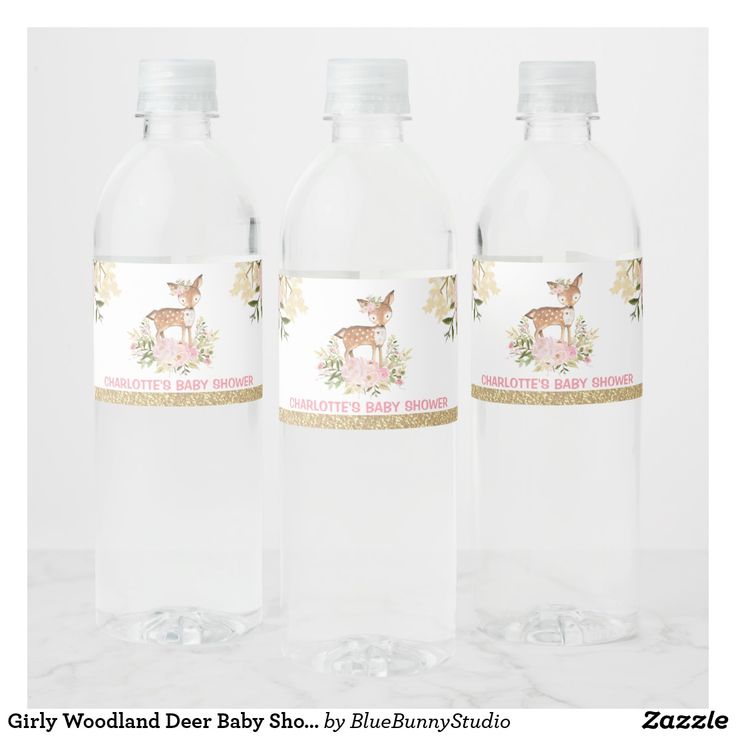 The industrial production of this feed in Russia promises considerable benefits for farmers and businessmen.
The industrial production of this feed in Russia promises considerable benefits for farmers and businessmen.
When given the choice, all wild ungulates prefer more moist protein (from legumes) feed - haylage (45-60% water) and non-acidic silage (65-85% water). In terms of nutritional value, these feeds are close to the green mass of grasses. The best silage is obtained from a mixture of crops: sunflower with peas, vetch or corn, oats with peas or corn, corn with soybeans or peas. Haylage and grain haylage are often prepared from oats or barley with the addition of vetch, peas and sunflower. The main preservative factor that ensures the preservation of plant mass during hermetic storage is carbon dioxide (CO2). The technology of haylage and ensiling is relatively simple and well-established in agriculture. Shredded (3-4 cm) green mass in silo and haylage trenches and mounds, treated with chemical or biological preservatives, is carefully compacted and immediately covered on all sides with a polymer film to isolate it from air and precipitation.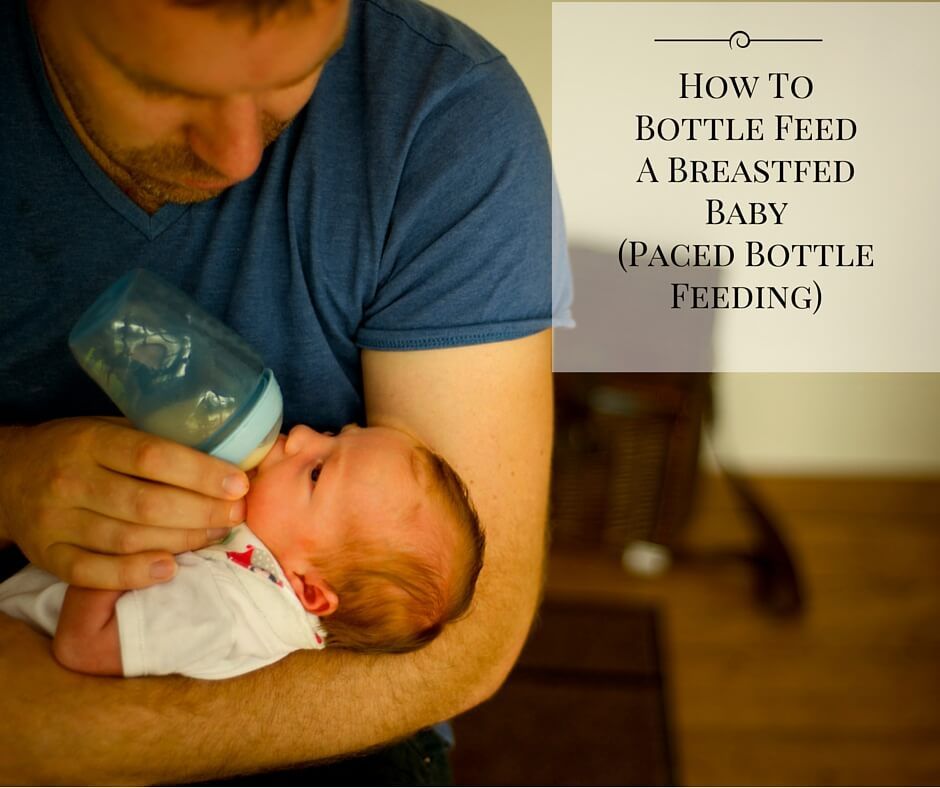
It is preferable to place haylage and silo storages inside the aviary. In this case, the animals will feed directly from trenches or mounds, in which the food does not freeze even in severe frosts due to the heat generated. It is important at the same time to prevent the animals from opening the feed from above and from the sides, which usually leads to its freezing, contamination with excrement and spoilage. Succulent feed imported from outside (haylage, silage, root and tuber crops), laid out in small piles on feeding grounds in winter, usually freezes heavily and becomes inedible. It is preferable to lay out such food in small portions only in the thaw or in spring in places well warmed by the sun. Juicy food largely contributes to the gradual transition of ungulates from winter food to green spring food. Therefore, in a severely frosty period, the diet of animals should be hay, in a slightly frosty period - mixed, in the spring period - mainly haylage and silage.
Concentrated feed (grain, grain mixtures, grain waste, waste from flour-grinding, baking, starch, sugar, brewing industries, etc. ) are rich in protein and readily eaten by ungulates. Grain and any grain mixtures, however, cannot fully satisfy the needs of animals for essential nutrients. They need a variety of feeds and micro-additives in various combinations and ratios in the composition of compound feeds. The biological usefulness of the latter is usually achieved through the introduction of premixes (1-5% by weight of compound feed), which include synthetic preparations of vitamins, amino acids and enzymes, mineral salts, antibiotics, antioxidants, natural minerals, immunomodulators and other biologically active substances that contribute to prevention of diseases associated with a lack of vitamins and microelements, normalizing metabolism and energy, increasing feed digestibility and animal productivity. Along with compound feeds, the feed industry produces protein-vitamin concentrate (PVK), which is added to grain mixtures from 25 to 50%, and protein-vitamin-mineral supplements (BVMD), which are usually added to compound feed up to 25-35% by weight.
) are rich in protein and readily eaten by ungulates. Grain and any grain mixtures, however, cannot fully satisfy the needs of animals for essential nutrients. They need a variety of feeds and micro-additives in various combinations and ratios in the composition of compound feeds. The biological usefulness of the latter is usually achieved through the introduction of premixes (1-5% by weight of compound feed), which include synthetic preparations of vitamins, amino acids and enzymes, mineral salts, antibiotics, antioxidants, natural minerals, immunomodulators and other biologically active substances that contribute to prevention of diseases associated with a lack of vitamins and microelements, normalizing metabolism and energy, increasing feed digestibility and animal productivity. Along with compound feeds, the feed industry produces protein-vitamin concentrate (PVK), which is added to grain mixtures from 25 to 50%, and protein-vitamin-mineral supplements (BVMD), which are usually added to compound feed up to 25-35% by weight.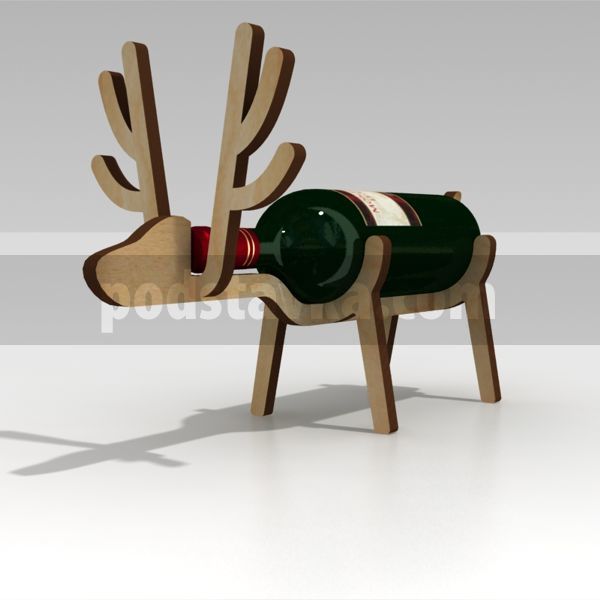 They cannot be used in their pure form (for more details on feeds and biologically active feed additives for animals, see: Mukhina et al., 2008).
They cannot be used in their pure form (for more details on feeds and biologically active feed additives for animals, see: Mukhina et al., 2008).
Domestic compound feeds and premixes are specially designed for all types of poultry and game birds, pigs of all ages, cattle, horses, sheep and goats, herbivorous and carnivorous fur animals, laboratory and pets, dogs and domestic reindeer. Wild ungulates have been left out of technological progress, and there is also a vast field of activity for technologists and businessmen.
Ungulates should be fed grain (but not stored!) in a crushed or flattened form - this way it is much better digested by the body. They eat mixed feed, bran, flour, cake and meal willingly and in large quantities, which often leads to blockage of the esophagus, cessation of chewing gum and belching, swelling of the scar and death of animals. Therefore, it is better to give these feeds in small portions mixed with silage, haylage and chopped root crops or after soaking them for 3-4 hours in cold water, which prevents the feed from swelling in the stomach. Complete feed mixtures prepared during haylage, ensiling or immediately before feeding are the most useful and promising in farming.
Complete feed mixtures prepared during haylage, ensiling or immediately before feeding are the most useful and promising in farming.
Concentrated feeds are laid out for animals in feeders and on feeding tables raised above the ground to the height of their chests, or on snow to increase moisture. It should be taken into account, however, that wild boars can eat part of the reindeer food: they stand on their hind legs, rest against the edge of the feeder with their front legs, reach for food or drop it to the ground with their snouts.
All feed should be not only high-calorie, but also of high quality. Their quality is usually determined by smell and color. Hay should be green and fragrant. Good-quality silage smells like pickled apples. A musty and putrid smell, the presence of mold, gray, brownish or brown color of hay, haylage, silage and grain feed are obvious signs of their unsuitability.
Feeding of ungulates in hunting parks should be regular and plentiful throughout the entire autumn-winter and early spring period, and in case of their high density - almost all year round.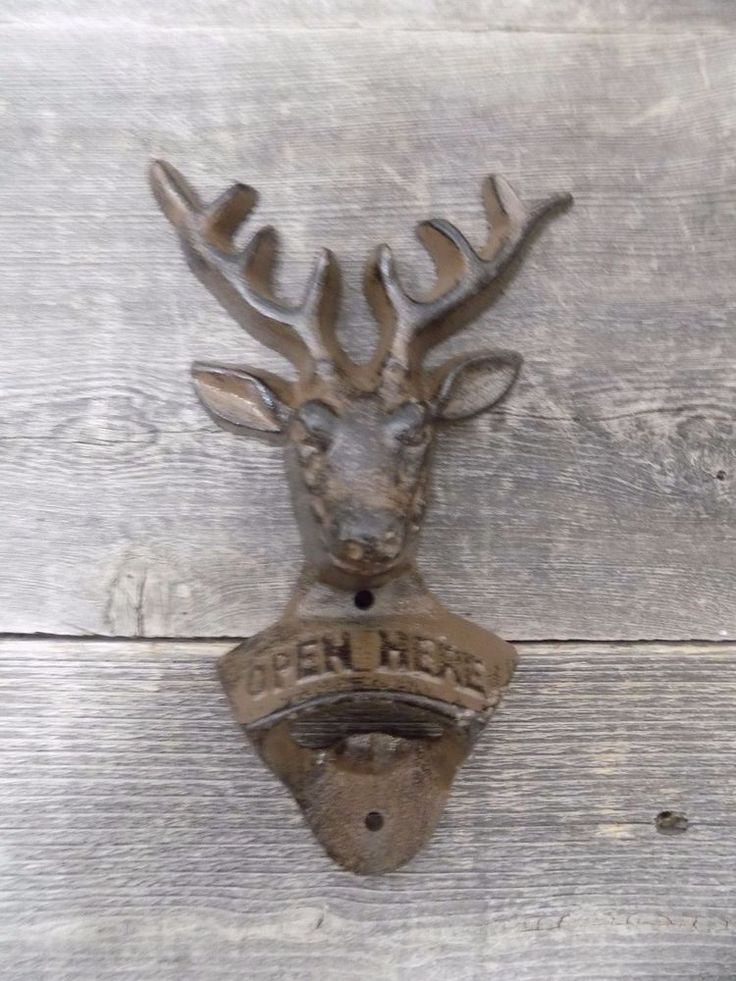 For one roe deer, about 1.5 kg of succulent, 0.2 kg of concentrated feed and about 1 kg of high quality hay per day are required. The diet of sika and red deer in maral and reindeer farms usually consists of 1.5-2 kg of high-quality hay, 2-6 kg of silage and 0.3-1 kg of concentrated feed with free water provided all year round, and its structure is not the same in seasons years (Table 4). With a shortage of natural food and on severely frosty days, the calculation rate is almost doubled. In winter, one deer needs about 10-13 q of coarse, 12-15 q of juicy and about 2-2.5 q of concentrated feed, sika deer and fallow deer, respectively, about 6, 8 and 1.5-2 q, roe deer - a little less, as they are more picky about food and leave a significant part of the food laid out in the feeders. It is less labor-intensive to lay out a double portion every other day, but in severe frosts you have to feed the animals daily. Animals usually go to the feeders twice a day - in the morning and in the evening, but hungry - at any time of the day.
For one roe deer, about 1.5 kg of succulent, 0.2 kg of concentrated feed and about 1 kg of high quality hay per day are required. The diet of sika and red deer in maral and reindeer farms usually consists of 1.5-2 kg of high-quality hay, 2-6 kg of silage and 0.3-1 kg of concentrated feed with free water provided all year round, and its structure is not the same in seasons years (Table 4). With a shortage of natural food and on severely frosty days, the calculation rate is almost doubled. In winter, one deer needs about 10-13 q of coarse, 12-15 q of juicy and about 2-2.5 q of concentrated feed, sika deer and fallow deer, respectively, about 6, 8 and 1.5-2 q, roe deer - a little less, as they are more picky about food and leave a significant part of the food laid out in the feeders. It is less labor-intensive to lay out a double portion every other day, but in severe frosts you have to feed the animals daily. Animals usually go to the feeders twice a day - in the morning and in the evening, but hungry - at any time of the day.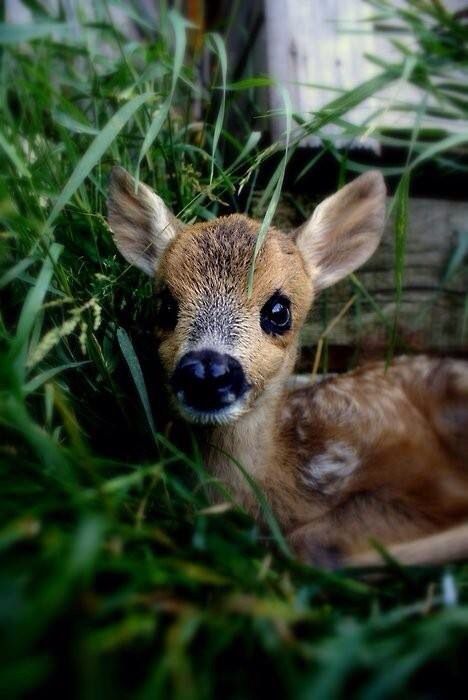
In trophy farms, during the period of horn growth, males significantly increase the share of concentrated feed: crushed oats, wheat and barley, as well as corn and mixed feed with biologically active feed additives, bran, cake and meal - up to 0.5-0.7 kg per day for one roe deer and up to 1.2-2 kg per individual for different types of deer and fallow deer. It will not be superfluous at this time to add bone, meat and bone and fish meal, feed precipitate, monocalcium phosphate, diammonium phosphate, crushed chalk and feed mineral complex additives (DKMK) to the feed. It would be very nice if our feed industry mastered the production of special concentrates for "trophy" animals. Females need an increased rate of concentrates in the last two months of pregnancy.
With high-quality, plentiful and balanced nutrition, rapid growth of young animals, high fertility of females and the cultivation of good offspring are guaranteed, and males will have powerful antlers, which has been proven by many years of antler reindeer breeding. Boar feeding. This ungulate needs specific protein food (in nature - earthworms, insects, animal carrion, cereals and legumes, fruits), which ensures the maximum accumulation of fat reserves. In hunting and farming farms, grain waste or grain of oats, barley, wheat and rye, as well as corn, peas, sunflowers, lupins, potatoes, beets, carrots, Jerusalem artichoke, apples, pears, acorns, beech nuts, compound feed, cake are usually laid out for wild boar. , various wastes of food enterprises, meat and bone meal. With such an assortment, it will be very useful for the farmer to have close friendship with the heads of grain elevators and various food enterprises. Often such food is brought into enclosures and left in heaps in the open air, which leads to its spoilage. Wild pigs, despite their omnivorous nature, do not eat all the feed offered to them, but, as practice shows, only benign, highly nutritious and mostly moist. In most cases, animals that have a well-developed instinct for self-preservation do not approach spoiled food until they have the opportunity to find another.
Boar feeding. This ungulate needs specific protein food (in nature - earthworms, insects, animal carrion, cereals and legumes, fruits), which ensures the maximum accumulation of fat reserves. In hunting and farming farms, grain waste or grain of oats, barley, wheat and rye, as well as corn, peas, sunflowers, lupins, potatoes, beets, carrots, Jerusalem artichoke, apples, pears, acorns, beech nuts, compound feed, cake are usually laid out for wild boar. , various wastes of food enterprises, meat and bone meal. With such an assortment, it will be very useful for the farmer to have close friendship with the heads of grain elevators and various food enterprises. Often such food is brought into enclosures and left in heaps in the open air, which leads to its spoilage. Wild pigs, despite their omnivorous nature, do not eat all the feed offered to them, but, as practice shows, only benign, highly nutritious and mostly moist. In most cases, animals that have a well-developed instinct for self-preservation do not approach spoiled food until they have the opportunity to find another. In hunger, they eat such food, but the consequences can be sad for both animals and farmers. Cases of poisoning and death of wild boars, especially underyearlings, with poor-quality food are recorded everywhere.
In hunger, they eat such food, but the consequences can be sad for both animals and farmers. Cases of poisoning and death of wild boars, especially underyearlings, with poor-quality food are recorded everywhere.
It should also be noted that wild pigs are very cautious about any new feed and, even when hungry, do not immediately eat it. Sometimes they ignore Jerusalem artichoke or grain feed for weeks if it contains a large proportion of vetch seeds. They do not immediately eat silage, especially corn silage. Carrots, cabbage and turnips are eaten by them poorly, in a crushed form - more willingly.
Whole grains must be crushed before placing in the feeders. As our experiments show, its digestibility by a wild boar in this case increases by almost a third, and the farmer, accordingly, does not “throw out” a third of the feed into manure! Wild boar's favorite food is corn and peas. Potatoes are also considered the best food, although this is not entirely true. They are rich in carbohydrates, but contain little protein, so this food can only be regarded as "supportive". In all respects, Jerusalem artichoke is much more valuable.
In all respects, Jerusalem artichoke is much more valuable.
Wheat, barley, soybeans, oats, vetch-pea-oat mixture, grain and leguminous mixtures of crops, mowed at the stage of milky-wax ripeness, dried and stored in shocks and piles - is also a good and, most importantly, relatively cheap fodder. The transportation of unthreshed stacks, stacked on drags (cut branched trees) to the winter shelters of animals in enclosures, can become one of the main methods of feeding. Wild boars also willingly eat stacks of alfalfa and green rapeseed, mowed after a frost and stored in heaps on feeding grounds.
A wonderful product for animals (but so far expensive for a farmer) is a granular compound feed intended for fattening domestic pigs to fat conditions. It is preferable to put grain feed and compound feed in strong, long and stable wooden or metal troughs or on platforms made of boards built on the ground, which prevents food from trampling into the mud and reduces the risk of helminth infection, and in winter it is better to pour the feed in small portions on the snow to increase humidity .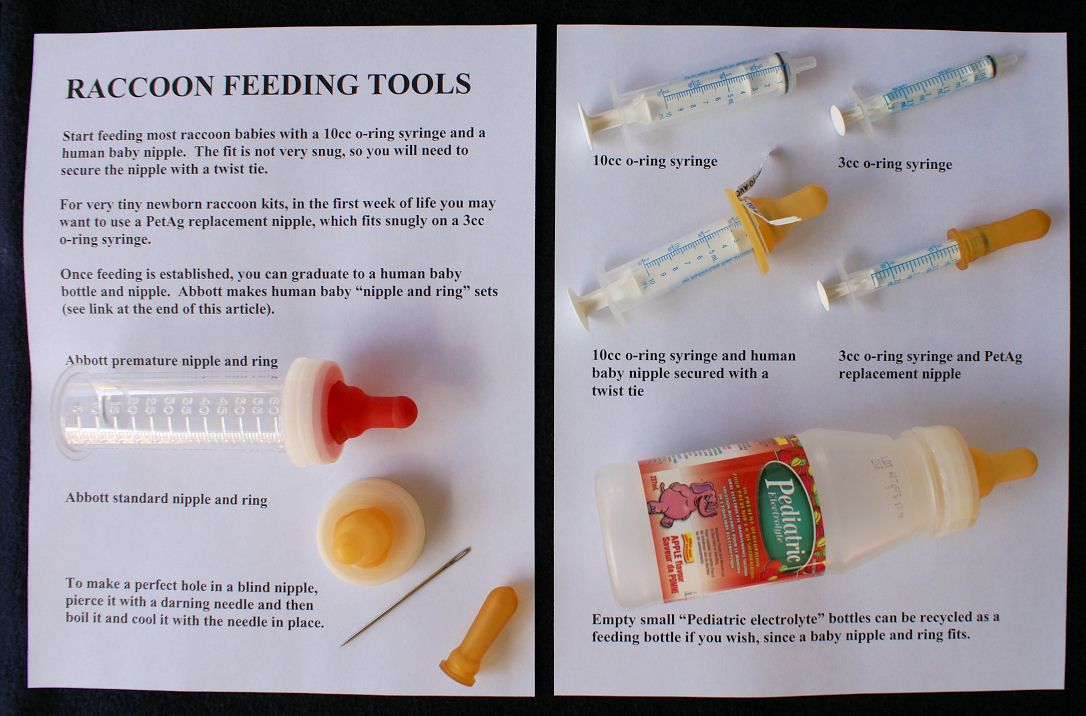 Part of the food remains in the snow, however, as it melts, all the food will be eaten. To avoid competition for food and fights leading to injury, it is desirable to spread the food as wide as possible. Separate feeding grounds are arranged for underyearlings, fenced from the penetration of adults, which will ensure their food supply, significantly reduce injuries and make it possible to carry out deworming. In the case of a joint keeping of a wild boar and a red deer, the feeding grounds for the former will also have to be fenced off, since the deer dominate, quickly eat the food and at the same time shit in the troughs.
Part of the food remains in the snow, however, as it melts, all the food will be eaten. To avoid competition for food and fights leading to injury, it is desirable to spread the food as wide as possible. Separate feeding grounds are arranged for underyearlings, fenced from the penetration of adults, which will ensure their food supply, significantly reduce injuries and make it possible to carry out deworming. In the case of a joint keeping of a wild boar and a red deer, the feeding grounds for the former will also have to be fenced off, since the deer dominate, quickly eat the food and at the same time shit in the troughs.
Estimated period of feeding wild pigs in hunting farms - 70-165 days depending on climatic conditions, daily laying rate - 1-3 kg per head, depending on the type of feed and the severity of winters. The annual feeding rate in Zavidovo is 100-110 kg of potatoes and about 7 kg of peas per individual, which is not enough in snowy winters. In January - March, the calculation rate is increased to 2-3. 5 kg per animal. In Belovezhskaya Pushcha and in the Berezinsky Reserve, from 0.5 (November) to 2-4 kg (until March) is spread per animal per day. On frosty days, the daily ration is increased to 3-4 kg per individual. In fact, in natural conditions during the snowy period, each wild boar requires at least 300-500 kg of high-quality top dressing. In open-air cages with a large number of livestock and a shortage of natural feed, each wild boar needs at least 1 ton of feed per year, which is very noticeable for a farmer's wallet. Otherwise, the animals will die.
5 kg per animal. In Belovezhskaya Pushcha and in the Berezinsky Reserve, from 0.5 (November) to 2-4 kg (until March) is spread per animal per day. On frosty days, the daily ration is increased to 3-4 kg per individual. In fact, in natural conditions during the snowy period, each wild boar requires at least 300-500 kg of high-quality top dressing. In open-air cages with a large number of livestock and a shortage of natural feed, each wild boar needs at least 1 ton of feed per year, which is very noticeable for a farmer's wallet. Otherwise, the animals will die.
Red deer rearing in artificial conditions
I must say right away that my personal experience in this area is not very great - we (so far) have raised only one red deer baby. But at the very beginning we faced a huge problem - we could not find information anywhere that would help us out. Actually, that's why I came up with the idea to write a short guide for those who still have to enter in the search engines "how to feed a red deer cub. "
"
First you need to determine the age animals. Our Yashik came to us through second hands, so only a veterinarian could reliably determine his age - 6-7 days. So, what does a wapiti cub look like at a week of age:
Height at withers: 64 cm
He still does not stand very well on his legs, they are slightly curved in the shape of an X. He often “cries”.
Teeth: back (if I may say so) not yet, front 8 (now Yasha is already 2 months old, but the front is gone), they are all below. 2 in the center are very large and funny: o) the rest are quite small.
Weight: 10-12 kg (but this is taking into account that he was fed incorrectly throughout his first week)
By the way, it would be useful to understand who is in front of you - deer or spotted deer. They are often confused. The red deer is larger (against our 65 at the withers - 45-50 in the spotted deer, weight approx. 4-6 kg). The head is large, the ears are elongated. I would compare them with the length of the nose from the tip to the eyes. The deer has a neat muzzle with VERY large round ears. Now as for the coloring. It should be noted that everyone has spots. In deer, they are located along the ridge and will come off after the first molt in October, while in spotted deer they are all over the body and will remain for life.
I would compare them with the length of the nose from the tip to the eyes. The deer has a neat muzzle with VERY large round ears. Now as for the coloring. It should be noted that everyone has spots. In deer, they are located along the ridge and will come off after the first molt in October, while in spotted deer they are all over the body and will remain for life.
In red deer the spot under the tail is yellow and small, dimly outlined. In a deer, on the contrary, it is white, wider and strikingly different in color from the general background.
And now the most important thing - about feeding. Or is it more correct to say breastfeeding .
Golden rule: don't overfeed. Feeding and red deer and deer represent a fractional supply of milk. We gave cow's milk (necessarily boiled!) With the addition of water and infant formula "Malyutka 1" (one - that is, from birth).
Mixture: 1 liter of milk, 8 scoops of formula, 0. 5 liters of water. For the first 2 weeks, you need to feed 8-10 times a day, 100 g of the resulting mixture. It is better to use a bottle with a simple (not the most expensive) elongated nipple. By the way, because of the structure of the jaws, the deer did not recognize the pacifier so respected by Aventa mothers. Of course, it is better to warm up to 36-38 degrees. You can check the temperature just like for children - with a drop on the elbow bend. , between feed leniya, give about 150 ml of water. Once a day we gave lightly salted (1 tea naya spoon without top per liter of boiled water). To Ormi now 8 times a day, 250 ml.
5 liters of water. For the first 2 weeks, you need to feed 8-10 times a day, 100 g of the resulting mixture. It is better to use a bottle with a simple (not the most expensive) elongated nipple. By the way, because of the structure of the jaws, the deer did not recognize the pacifier so respected by Aventa mothers. Of course, it is better to warm up to 36-38 degrees. You can check the temperature just like for children - with a drop on the elbow bend. , between feed leniya, give about 150 ml of water. Once a day we gave lightly salted (1 tea naya spoon without top per liter of boiled water). To Ormi now 8 times a day, 250 ml.
At the age of three weeks, a red deer was drunk with a five-day course of the Vetom-2 probiotic (I won’t say why exactly “2”, but that’s how we were determined in the veterinary clinic). Dilute one sachet in 200 ml of water, divide in half and give twice a day one hour after feeding (so you will need 5 sachets)
Month. At this age, you can transfer from a baby bottle to a cow bottle (for feeding calves - sold in veterinary stores). No, of course, you can continue to drink from a small one, but it will be tiring - you need to fill it several times for one meal or have 4 at once. Its cost in Primorsky Krai ranges from 1900 to 2400 for a 25 kg bag. This amount is enough for about 2 months. The first days we add kormilak to cow's milk, but we cancel the infant formula (i.e. it turns out 1 liter of milk + 0.75 ml of water + 100 g of kormilak), then (well, say, on the fifth day) we give pure kormilak, i.e. . at the rate of 1:9, as written on the package. I weighed a plastic container on a culinary scale, it turned out to be 200 gr, i.e. almost 2 liters of water. At the age of one to two months, his daily intake increased from 2.5 to 4 liters of formula per day, and the frequency of feeding decreased from 6 to 4 times.
No, of course, you can continue to drink from a small one, but it will be tiring - you need to fill it several times for one meal or have 4 at once. Its cost in Primorsky Krai ranges from 1900 to 2400 for a 25 kg bag. This amount is enough for about 2 months. The first days we add kormilak to cow's milk, but we cancel the infant formula (i.e. it turns out 1 liter of milk + 0.75 ml of water + 100 g of kormilak), then (well, say, on the fifth day) we give pure kormilak, i.e. . at the rate of 1:9, as written on the package. I weighed a plastic container on a culinary scale, it turned out to be 200 gr, i.e. almost 2 liters of water. At the age of one to two months, his daily intake increased from 2.5 to 4 liters of formula per day, and the frequency of feeding decreased from 6 to 4 times.
Grass . I wondered for a long time when to start feeding with grass. But everything turned out to be easier - Yashichek himself reached for the raspberries. And off we go. Most of all he liked dandelions, grapes, raspberries.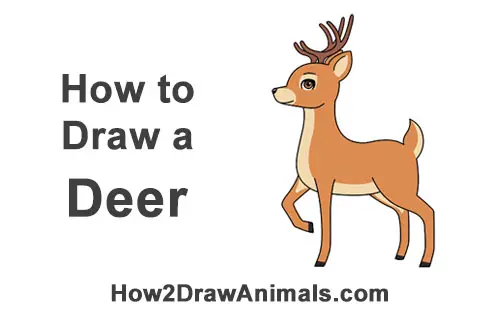
Then come beets, ash leaves, currants. He also loves berries terribly: o) Honeysuckle, strawberries, currants, raspberries, irga - everything goes with a bang. At the same time, the apples directly spits out. You can give pureed vegetables as a substitute for grass.
Faeces. Normally, he is like a goat - balls. Our pet had diarrhea at first. Wrong food - diarrhea, did not boil the bottle - diarrhea, overfed - diarrhea again. What to do. Give less food and carefully monitor the sterility of dishes.
Dehydration on the second day of life at my house, the veterinarian determined us - Yashka refused to eat, could hardly stand on his feet. He was given a dropper in the neck (do not do it without a specialist!) with saline through a butterfly 4-ku, 200 ml + half a bottle of glucose. He almost immediately got to his feet, but it was impossible to feed, it was possible to give saline in the evening and replace one meal with it the next day. In general, having a doctor in the family, on the second day we were ready to repeat the drip on our own, but, fortunately, it was not necessary. In order to prevent, see above, drink salted water daily.
In general, having a doctor in the family, on the second day we were ready to repeat the drip on our own, but, fortunately, it was not necessary. In order to prevent, see above, drink salted water daily.
Arrangement places. Here, of course, the more the better. Yasha had to live in an open chicken pen, 3x8. The size, frankly, is not great. Net height 3.5 meters. It is necessary to make a small canopy, 1.1-1.2 m high, with a roof and without one wall - so that it can enter freely, cover the floor with hay, which needs to be changed regularly (because they defecate, most often, under themselves).
General recommendations. The life of these small, defenseless creatures is in your hands. Therefore, it is important to decide what will happen to them when they are ready to exist on their own: do you intend to give it to the zoo / zoo / safari park or plan to release it into wildlife. The permissible frequency of contact with the animal depends on this.




